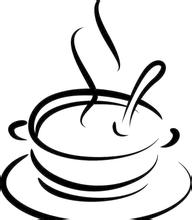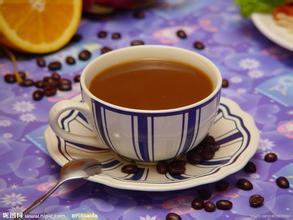Introduction to the Flavor and Taste of Fine Coffee in Snow vein Manor of Bolivia
The legal capital, the seat of the Supreme Court, with a population of 284000, 2790 meters above sea level. Founded in 1538, the city was formerly known as Chuquisaka. In 1809, the first uprising against Spanish rule broke out in South America. Bolivia declared its independence here in 1825 and became the capital in 1826. In 1839, it was renamed Sucre in honor of the second president of Bolivia, General Antonio Jos é Sucre. In 1898, the central government, presidential palace and parliamentary hall were moved to Russ, and the Supreme Court stayed in Sucre. Sucre has been listed by the United Nations Educational, Scientific and Cultural Organization (UNESCO) as a cultural heritage of humanity. Bolivia is located in central South America, a landlocked country. It is bounded by Brazil in the northeast, Paraguay in the southeast, Argentina in the south, Chile in the southwest and Peru in the west. It belongs to temperate climate. It is an inland plateau country in South America. The land area is 1098581 square kilometers, ranking fifth in South America, and the eighth in America is rich in mineral resources, mainly tin, antimony, tungsten, silver, zinc, lead, copper, nickel, iron, gold and so on. Mineral deposits are rich, with tin reserves of 1.15 million tons, ranking second in the world; iron reserves of 45 billion tons, second only to Brazil in Latin America; and lithium reserves of 100 million tons, ranking first in the world. [7]
Petroleum and natural gas
Bolivia is rich in oil and gas resources. Proven oil reserves are 929 million barrels and proven natural gas reserves are 52.3 trillion cubic feet as of 2013.
Forestry
Rich in resources, the forest covers an area of 530000 square kilometers (53 million hectares). The main wood varieties are: mahogany, red juniper, American oak, sandbox wood, heavy ant wood, Yibei and Longfeng planted Bolivian coffee market:
The coffee grown in Bolivia, of which Arabic washed coffee beans are exported to Germany and Sweden, is not the best today and has the characteristics of bitter Bolivian coffee:
Flavor: high quality mixed coffee
Suggested baking method: medium to deep barbecue
★: in general, coffee trees in Bolivia used to be planted around the garden as hedges to decorate flowers and trees. Real commercial production began in the early 1950s. Bolivia (Bolivia) benefited from the severe frost that damaged Brazil's coffee industry in 1975, rapidly developing Bolivia's coffee producing areas:
Bolivian coffee is grown at an altitude of 180,000,670 meters above sea level. It is a lively, bright and vibrant coffee. Dry aroma is an unusual nutty aroma, somewhat similar to peanut butter. The wet aroma has aromas of vanilla and flowers. The palate is delicate, with apple sweetness and flavors of chocolate and vanilla

Important Notice :
前街咖啡 FrontStreet Coffee has moved to new addredd:
FrontStreet Coffee Address: 315,Donghua East Road,GuangZhou
Tel:020 38364473
- Prev

Introduction to the flavor and taste characteristics of Costa Rican Fire Phoenix Manor Coffee
From 1870 to 1882, T. Guardia Gutierrez exercised dictatorship, weakening the power of the two families. Since the 1970s, British and American capital has infiltrated. American entrepreneur M.C. Keith signed a contract with the Costa Rican government to build a railway from Port Limon to San Jose on the east coast, won a concession in 1999 and occupied large tracts of land to develop banana plantations. United Fruit of America in 1899
- Next

Excellent taste of Arusha coffee estate in Tanzania. Flavor characteristics
The Tanzanian flag is rectangular in shape and has a length to width ratio of 3:2. The flag is composed of green, blue, black and yellow. The upper left and lower right are two equal right triangles of green and blue. The black wide strip with yellow edge runs obliquely from the lower left corner to the upper right corner. Green represents land and Islam; blue represents rivers, lakes and seas; black represents African blacks
Related
- Does Rose Summer choose Blue, Green or Red? Detailed explanation of Rose Summer Coffee plots and Classification in Panamanian Jade Manor
- What is the difference between the origin, producing area, processing plant, cooperative and manor of coffee beans?
- How fine does the espresso powder fit? how to grind the espresso?
- Sca coffee roasting degree color card coffee roasting degree 8 roasting color values what do you mean?
- The practice of lattes: how to make lattes at home
- Introduction to Indonesian Fine Coffee beans-- Java Coffee producing area of Indonesian Arabica Coffee
- How much will the flavor of light and medium roasted rose summer be expressed? What baking level is rose summer suitable for?
- Introduction to the characteristics of washing, sun-drying or wet-planing coffee commonly used in Mantenin, Indonesia
- Price characteristics of Arabica Coffee Bean Starbucks introduction to Manning Coffee Bean Taste producing area Variety Manor
- What is the authentic Yega flavor? What are the flavor characteristics of the really excellent Yejasuffi coffee beans?

